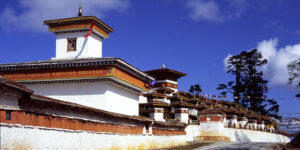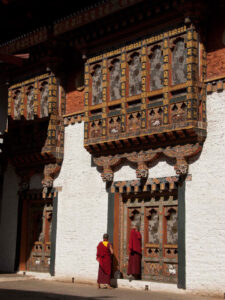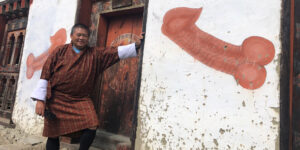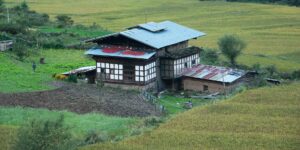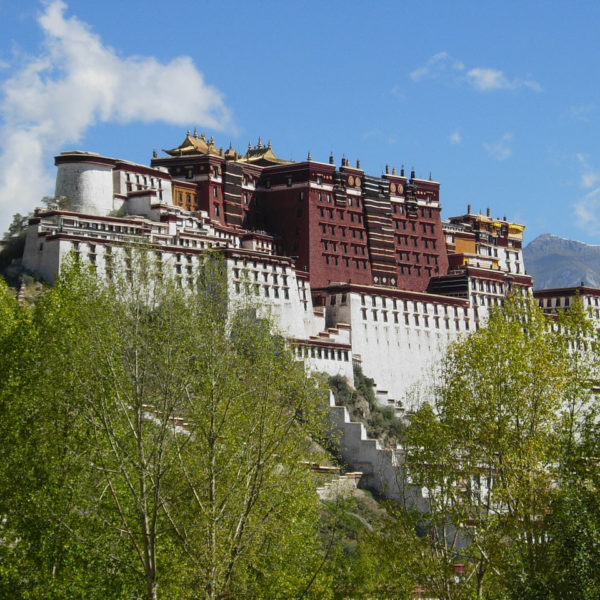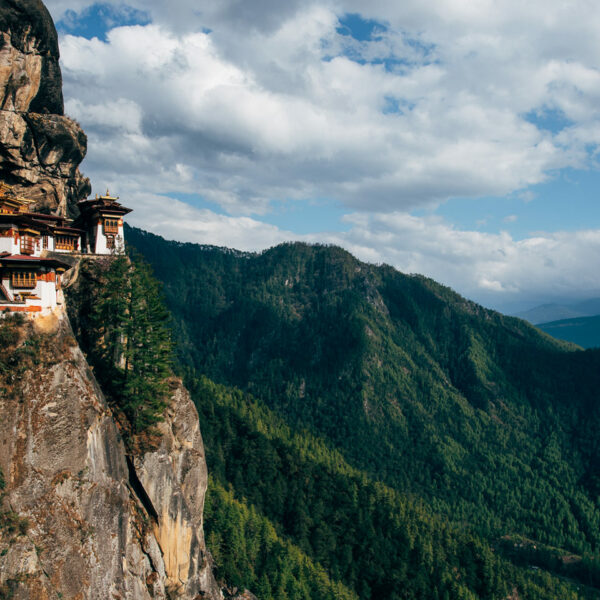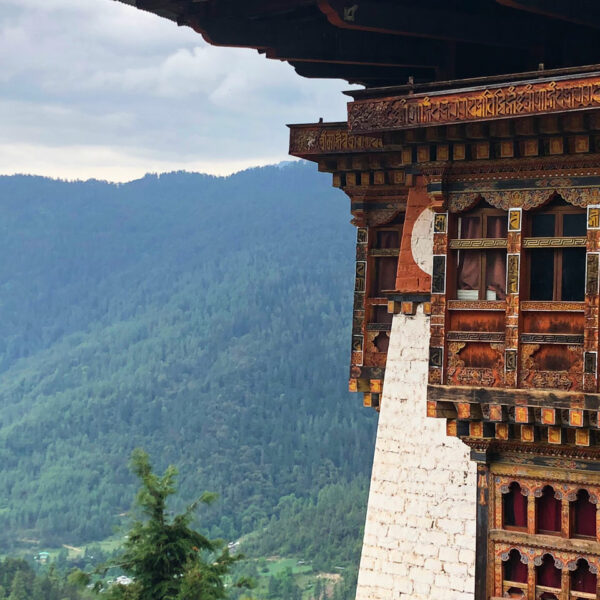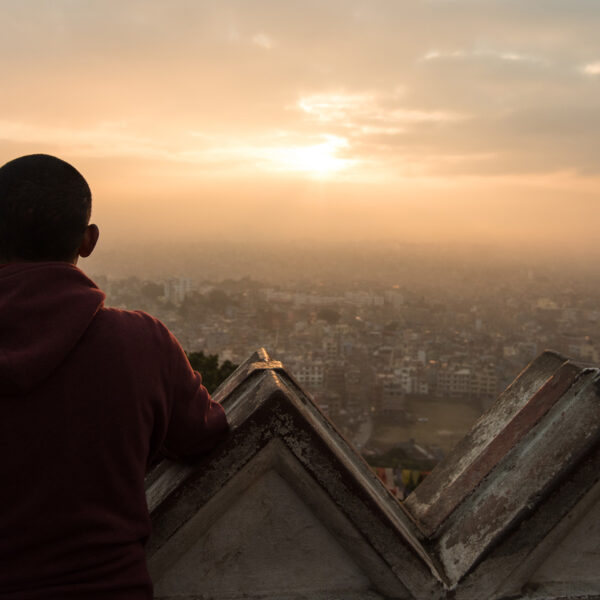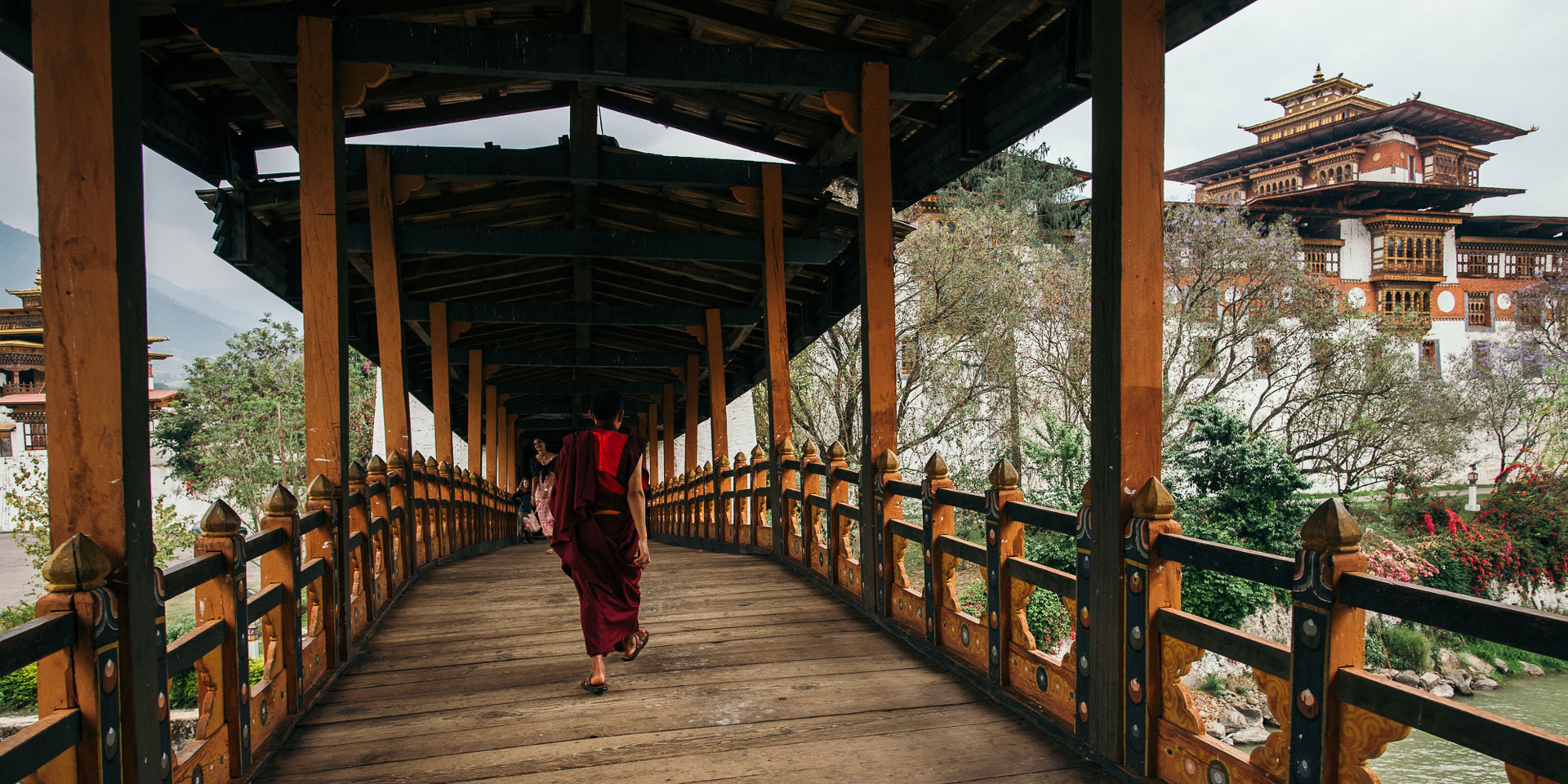
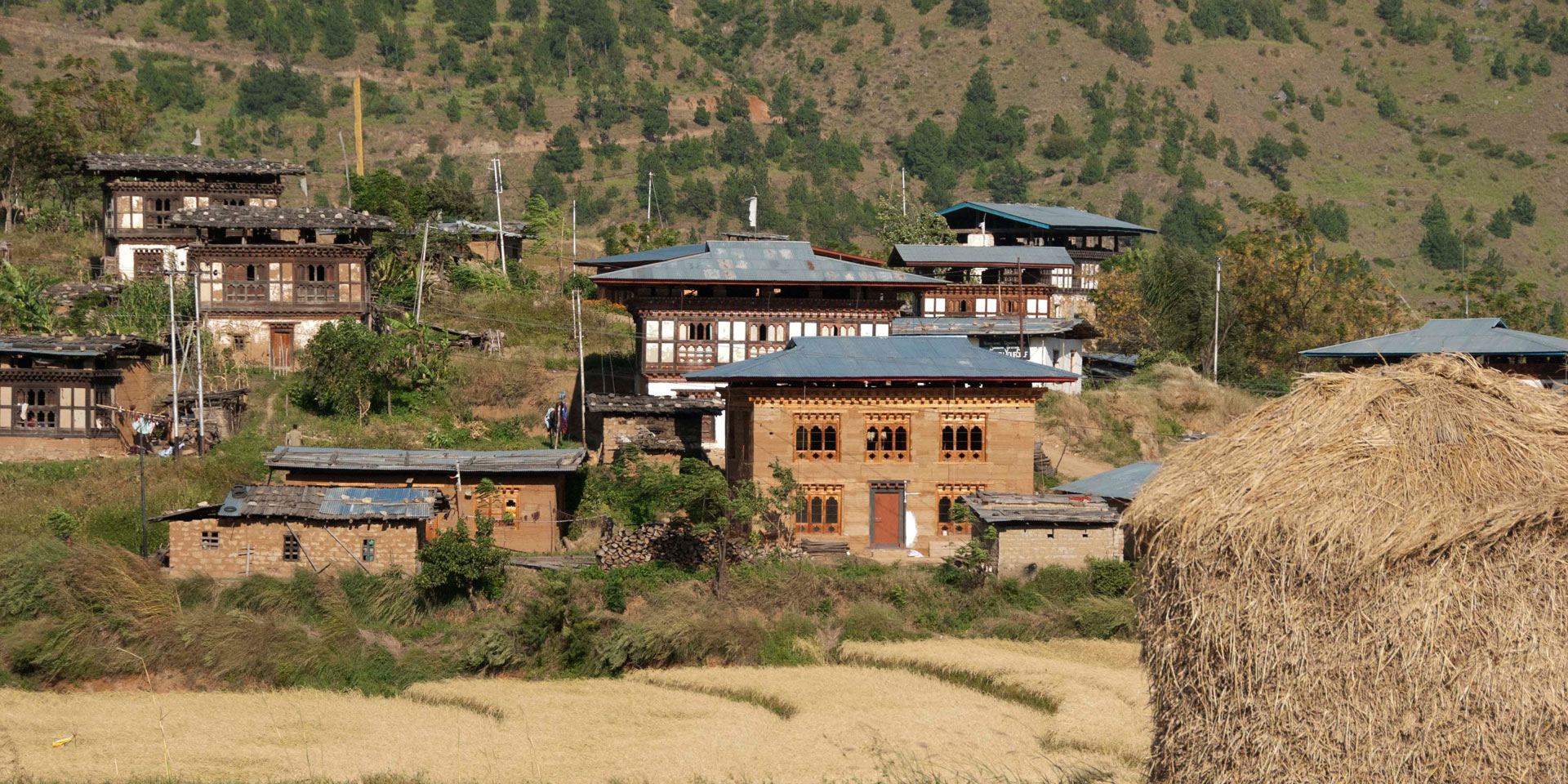
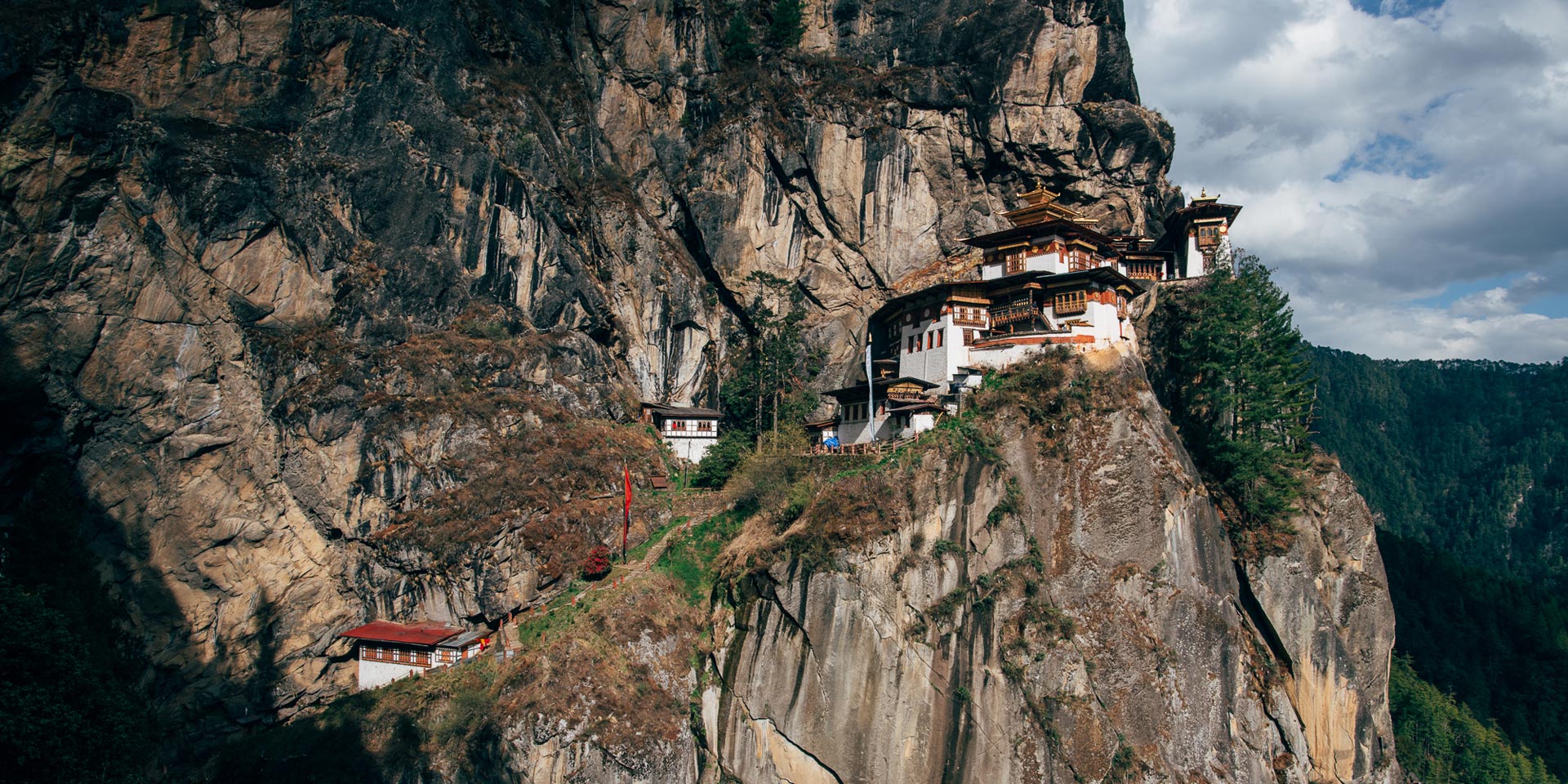
Glimpse of Bhutan
We have designed this tour for those who are pushed for time, but wish to experience the essential Bhutan – the culture, the history, the food and the wonderful people! This trip allows the traveller to see the stunning traditional architecture and the landscape on an overland drive to the ancient capital. We get to explore this truly unique culture, clothing and crafts, the famously spicy food and of course to learn about Bhutan’s incredibly rich Buddhist heritage! All of this, set in the beautiful Bhutanese landscape with its high mountains, lush forests and picturesque terraced fields.
This 5 day tour offers you the essential experiences of Bhutan, tailored for those who have limited time but great interest in this amazing country.
- Starts In: Paro
- Ends In: Paro
- Duration: 5 Days
- Difficulty Grade: Easy
Highlights
- See all the major sights of Western Bhutan
- Experience Bhutan’s unspoiled nature
- Learn about the culture of Bhutan
- Enjoy Bhutanese cuisine
Itinerary
Day 01: Arrive at Paro
The spectacular flight into Paro is a great introduction to beautiful Bhutan – you may have breathtaking views of Mount Everest, Kanchenjunga and many other Himalayan peaks including the sacred Jhomolhari and Mt Jichu Drake in Bhutan. Upon arrival at Paro airport, you will be received by your host for the trip and driven to Thimphu, where we will have dinner and stay the night.
Thimpu is 60km from Paro and is the capital city of Bhutan. Before 1961 it was only a small settlement, but in that year King Jigme Dorje Wangchuk, started developing it as the capital and it now has an approximate population of 100,000. All new buildings have been designed in traditional style with Buddhist motifs and the result is a charming capital nestled in the Wang Chuu valley. It is one of only two capital cities in Asia without traffic lights!
You will have dinner at Thimphu’s most popular fusion restaurant called Chha Bistro (you won’t suffer forgettable hotel buffets on this adventure!) to wrap up your first day in style. Our good friend and owner of the restaurant is a very friendly person and will definitely add a personal touch to your meal.
Accommodation: Bhutan Suites/ Hotel Pedling/ Peaceful Resort
Meals included:
Lunch, Dinner
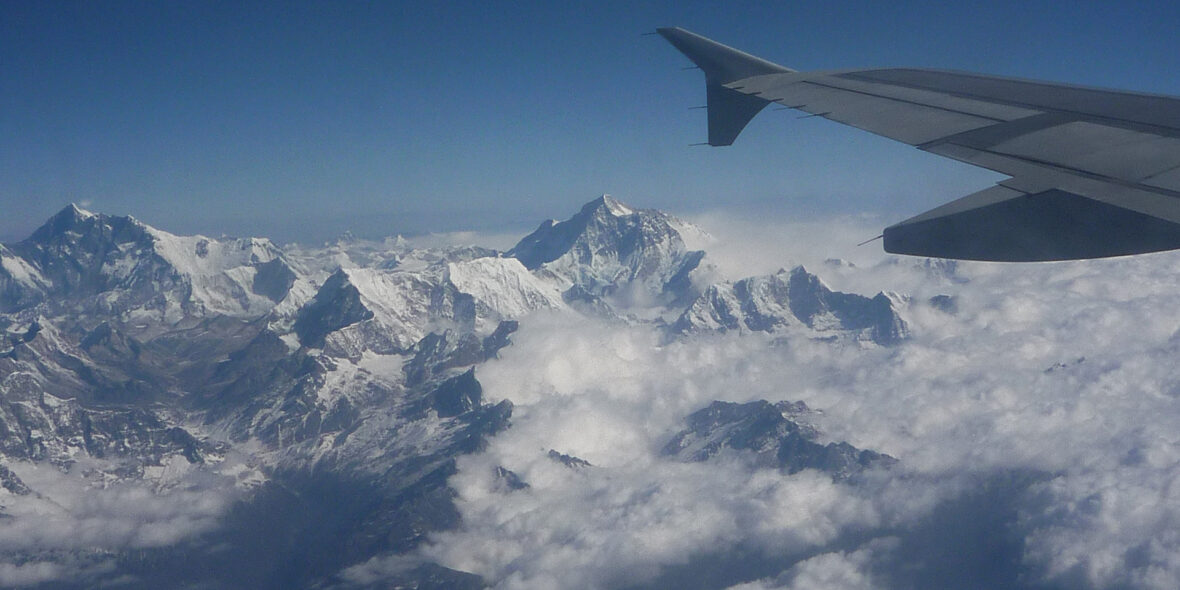
Day 02: Thimphu - Punakha - Thimphu
Today we get out of town and take some lovely drives to see ancient temples set against the stunning backdrop of the Himalayas!
After breakfast this morning, we have a scenic drive to Punakha, the ancient capital of Bhutan. On the way we cross the Dochu La (pass), where we will have a superb view of the Himalayan Range if the weather is clear. Driving through swarms of prayer flags fluttering in the wind we cross the pass and descend into the sub-tropical Punakha valley.
While in Punakha, we will visit Punakha Dzong (fort), built in 1637 by Shabdrung Ngawang Namgyal and situated between Pho Chu (Male River) and Mo Chu (Female River). The Shabdrung is credited with being the unifier of Bhutan and he also sought to create a distinctly Bhutanese cultural identity, separate from the Tibetan culture from which it was derived. This magnificent dzong has been destroyed by four fires, an earthquake in 1897 and has frequently been devastated by flood water coming from the great northern glaciers! However, the Dzong has now been fully restored to its original splendor.
The construction of the Dzong was foretold by Guru Rimpoche, who predicted, that a person named Namgyal would arrive at a hill that looks like an elephant. There was previously a smaller building here called Dzong Chu (Small Dzong) that housed a statue of Buddha. It is said that the Shabdrung ordered the architect, Zowe Palep, to sleep in front of the statue and while Palep was sleeping the Shabdrung took him in his dreams to Zangtopelri and showed him the palace of Guru Rimpoche. From his vision, the architect conceived the design for the new Dzong, which in keeping with the tradition, was never committed to paper. The Dzong was named Druk Pungthang Dechen Phodrang (Palace of Great Happiness). For many years, until the time of the second king, this Dzong served as the seat of the Government. Punakha is still the winter residence of the Je-Khenpo, the spiritual leader of Bhutan. War materials captured during the battle with the Tibetans are preserved here.
After lunch, we will stop to view the Chimi Lhakhang (temple), also known as “the Temple of Fertility”. This temple was built by Lama Drukpa Kuenley (also known as the Divine Madman for his odd ways) in the 15th century who subdued a demoness with a magical thunderbolt and made her the protective deity of the temple.
Following our visit to see this temple, we drive back to Thimphu in the evening.
Accommodation: Bhutan Suites/ Hotel Pedling/ Peaceful Resort
Meals included:
Breakfast, Lunch, Dinner
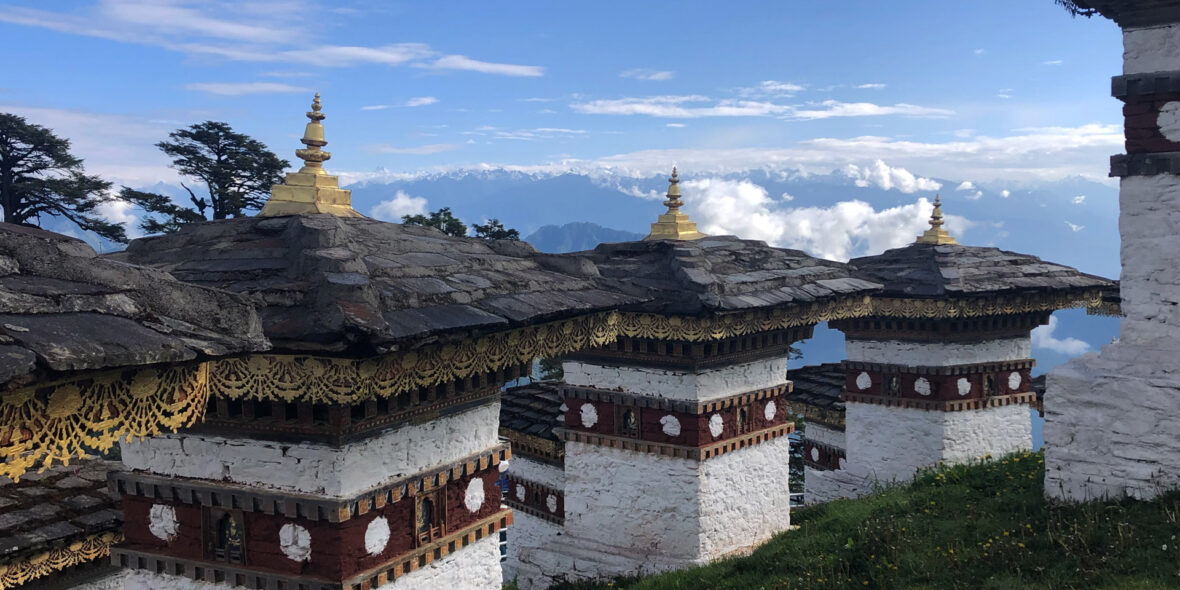
Day 03: Thimpu - Paro
After breakfast, we will indulge in a great day’s sightseeing in Thimphu! First, we will visit the National Memorial Chorten built-in memory of the third King of Bhutan, His Majesty King Jigme Dorji Wangchuck. The deities depicted inside are from the Nyingmapa tradition of Buddhism and teachings of Vajrayana (or tantric form of) Buddhism and provide a rare insight into Buddhist Philosophy.
We then visit the National Library, which holds a vast collection of ancient Buddhist manuscripts and some of the oldest records of Bhutanese history and religion. We follow this with a visit to the Painting School, famous for carving and freehand art. Here you can see not only paintings, sculpture, clay work and metal work, but also students and artists at work.
This is followed by a visit to the amazing Folk Heritage Museum. The principal exhibit is the museum building itself, a stunningly restored traditional rammed-earth and timber house. The museum is dedicated to connecting people to Bhutan’s rural past through the exhibition of items and artifacts used in rural households, demonstrations of rural customs, traditions, habits, and skills; educational programs for children about rural life in Bhutan, and research and documentation of rural life.
After lunch, we have an excursion to Cheri Monastery which was built in 1620 by the Shabdrung Ngawang Namgyal. The monastery, which is now a major teaching and retreat center of the Southern Drukpa Kagyu order, is located at the northern end of Thimphu Valley about fifteen kilometers from the capital. Stunningly located on the southern edge of the Jigme Dorji National Park, the monastery is a steep walk uphill from the road head through a delightful forest rich in plant species, animal, and birdlife. The views from the monastery are delightful and a silver chorten inside holds the ashes of the Shabdrung’s father.
In the evening we will visit the Tashichho Dzong (or the ‘Fortress of the Glorious Religion), built-in 1641 by Shabdrung Ngawang Namgyal and reconstructed in 1961 by the Late King, Jigme Dorji Wangchuck, who is regarded as the Father of Modern Bhutan. It is presently the seat of the national government and the Central Monastic Body, including the summer residence of the Je Khenpo (Chief Abbot of Bhutan).
We then visit the Handicrafts Emporium to see the exquisite artistry of Bhutan’s traditional crafts and textiles before an evening drive to Paro, ready to explore it tomorrow!
Accommodation: Metta Resort / Gangtey Palace
Meals included:
Breakfast, Lunch, Dinner

Day 04: Paro Sightseeing
This morning we head out of town to visit Taktsang, the Tiger’s Nest Monastery, perched high on a cliff and one of the most important places in Buddhism. While flying on the back of a tiger, Guru Rinpoche identified Taktsang as a sacred place and meditated in a cave for three months. Guru Rinpoche is also known as Padmasambhava, the tantric mystic who brought Buddhism to Bhutan in 747 AD. Today it’s perhaps the best-known monastery in the world, because of its stunning location and it is the unofficial symbol of Bhutan. The monastery was built around the meditation cave in 1684 by the Penlop of Paro and although a fire destroyed most of the original buildings in 1998, these have since been painstakingly restored to their former glory.
The hike to Taktshang is a steep walk and takes 2- 2 ½ hours to reach. The trail climbs through beautiful pine forest, many of the trees festooned with Spanish moss, and an occasional grove of fluttering prayer flags. We stop for a rest and light refreshments at the Taktsang Jakhang (cafeteria) and then walk a short distance until we gain an incredible view of the Monastery, perched precariously on the edge of the sheer 800m cliff!
After lunch we visit the Ta Dzong, an ancient watchtower that, since 1967, has been the National Museum of Bhutan. A specific route must be followed in the building which ensures a clockwise progression around important images. Exhibits include an impressive collection of thankas; a description of early history that illustrates how magic and science are inseparable in Bhutan; and not to be missed, Bhutan’s eclectic stamp collection, including some stamps that you can listen to on a record player! We then visit Rimpung Dzong (Paro Dzong) built in 1646 by Shabdrung Ngawang Namgyal. The Dzong presently houses administrative offices and protected within its walls is a collection of sacred masks and costumes, some dating back several centuries.
We then see the Kichu Lhakhang, which holds down the left foot of an ogress whose body covers Bhutan and most of Eastern Tibet. It is one of the 108 monasteries that were miraculously constructed in one night by Tibetan King Songten Gampo in the 7th century.
This is one of two of these monasteries that lies within Bhutan, the rest being found in neighboring countries. This is a nice place to reflect on our Bhutan tour as it exemplifies the interconnectedness of the region and the complex Buddhist history that binds the country together.
Tonight, we have our farewell dinner and evening in Paro.
Accommodation: Metta Resort / Gangtey Palace
Meals included:
Breakfast, Lunch, Dinner
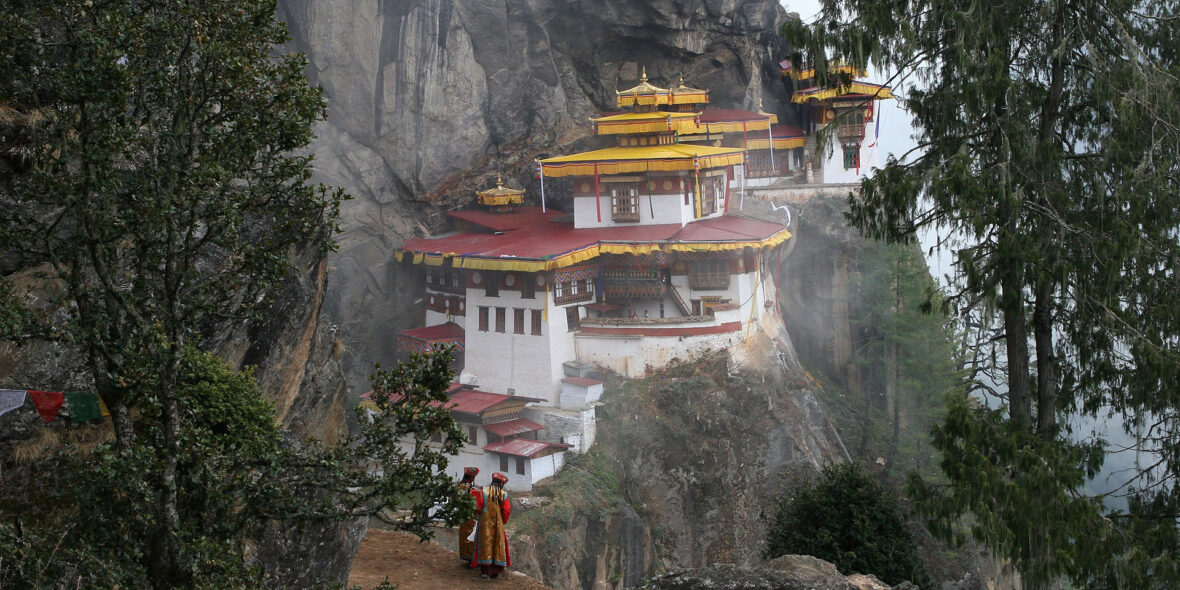
Day 05: Farewell for now...
Enjoy breakfast at your hotel and when it is time your guide will take you to the airport, help you with the formalities and fare you well before your flight to home.
Meals included: Breakfast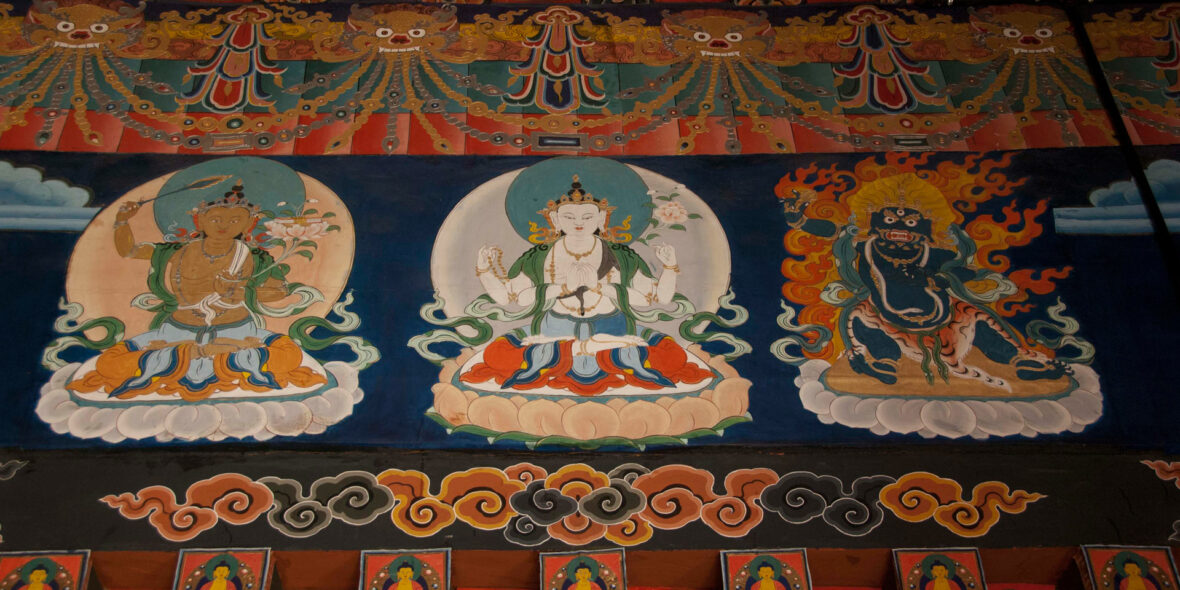
Included In Price
- Hotel nights in the hotels specified in the itinerary; based on standard rooms on twin share, bed and breakfast plan
- Meals as per the detailed itinerary
- Transportation as per the detailed itinerary in private vehicles
- Transfers from/to the international airport on arrival and departure
- Your Bhutan visa and travel permits
- Your Bhutan host
- All entrance fees
Not Included In Price
- Single room supplement
- International flights to and from Paro and international airport taxes; any excess baggage charges
- Comprehensive travel insurance that includes trip cancellation and emergency rescue/evacuation that covers all of the activities you will undertake during your trip should this be required for any reason (we require this as the minimum insurance cover)
- Services and activities not mentioned in the detailed itinerary above (eg additional nights, optional trips and sightseeing tours)
- Any gear or equipment that you may need to rent/buy – please ask us if you would like any advice about gear to bring/buy/rent
- Personal expenses (eg mineral water/soft drinks/bar bills, entrance/photography fees at monasteries, laundry, telephone calls, postage, donations, extra snacks, etc)



